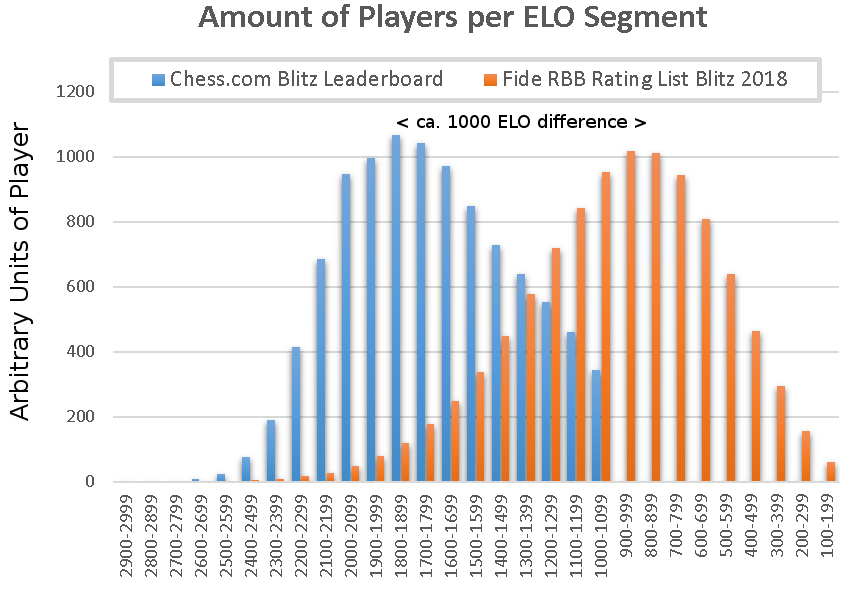^Sounds quite plausible.
FIDE ratings I guess are only for OTB competition players who are probably already fairly dedicated chess players.
The population on chess.com will be much broader and include a lot more casual players who are just dipping their toe in the water.
I would expect the mean/median chess.com rating to be lower than the mean/median FIDE rating.
That would more likely reflect a difference in the population characteristics rather than a relative discrepancy in the rating method.







The reason for the gap has more to do with the fact that you can't get a FIDE rating below 1000 and in many places, it is hard to get a FIDE rating at all (mainly due to limited events and a limited number of players with established FIDE ratings.) Again, the pools and rating methods are different.
I would have to look up the dates, but at one point, the lowest possible rating was 2000 and they have lowered that of a couple of times. That can also play into the distribution.
I'm also pretty sure your labels are wrong; chess.com should be the orange, FIDE the blue.
It appears you may be right, when it comes to Glicko at least, that players with essentially the same RD values, will gain and lose the same number of points. However, that only happens with players that have well established ratings. If the RD values are different, the magnitude of change for each will diverge, depending on the differences, so still not zero sum.